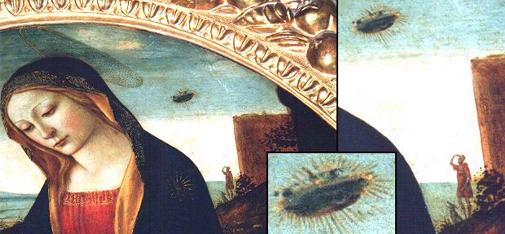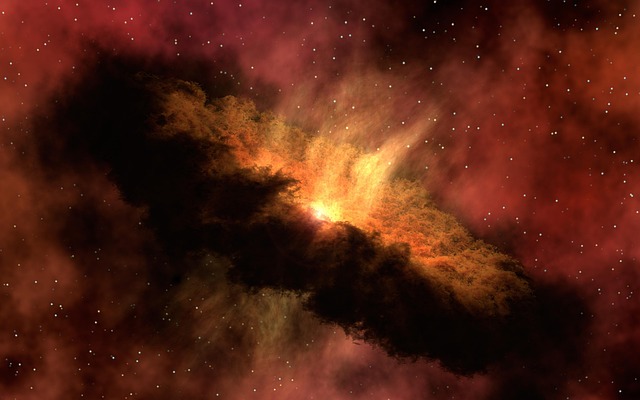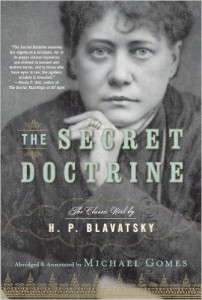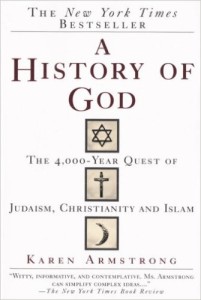
If one reads the bible or other holy scriptures — with an open mind — mysteries and magic blend with science and become abundant and apparent. A closed-minded individual sees it as a book of rules. Don’t dos. Don’t search for wisdom. Isn’t that the lesson of Adam and Eve? Don’t ask questions. And by all means don’t connect science and God.
I was raised Lutheran and to take part in communion, I had to attend confirmation classes. One of our pastors asked our class if we thought angels could be extraterrestrials. Sadly, because of his views, he didn’t last long with our congregation, but the effect of that question remains with me to this day. Though I laughed at the time, I think he may have been on to something.
My Readers
I love my readers. Their comments and emails offer me a wealth of exposure to possibilities and all the world might be. Ike Fehr is one of those readers. He left a comment about ancient aliens and religion that I found fascinating. We emailed back and forth and he has graciously offered to be a guest blogger. He asked a thought provoking question: Who created the who, who created all?
If you are an open minded individual in search of truth, and not afraid to challenge some of your Sunday School lessons, read on.
About Ike

In his own words:
Born more years ago than I can count but I am still healthy anyway. Graduated from Columbia College in Vancouver, B.C. and also graduated from Columbia Bible College after three years of intensive Bible and pastoral training.
Married a beautiful young lady when I was 23 and we have cultivated our love for the last 52 years. We have one biological daughter and two adopted daughters and five granddaughters.
About 40 years ago I realized that I needed to use my own mind to decide what I believe. What an eye opener that was for me! I am a Christian and still accept that the Bible is the book to guide me; it is the basis for my beliefs, but many of my beliefs are not in agreement with what one learns in church. In my blog I have no compunction about pointing out the errors found in church doctrines.
About the Akashic Field
This introductory information about the Akashic Field will help with understanding the information Ike shares with us below.

Background on Helena Blavatsky — Originator of the Akashic Field Concept

H.P. Blavatsky, author of The Secret Doctrine, was born on August 12, 1831, at Dnepropetrovsk (Ekaterinoslav), Ukraine. Shortly after her marriage to N. V. Blavatsky, she began more than 20 years of extensive travel, which brought her into contact with mystic traditions the world over.
She was the principal founder of the Theosophical Society in New York City in 1875, and devoted her extraordinary literary talents to its humanitarian and educational purposes until her death in London, England, on May 8, 1891.
H.P. Blavatsky introduced the Sanskrit term akasha to the language of theosophy. She described it as a type of life force. She also referred to it as “indestructible tablets of the astral light” that recorded both the past and future of human thought and action. But according to the book Handbook of the Theosophical Current by Olav Hammer and Mikael Rothstein, she did not use the term “akashic.”
Alfred Percy Sinnett, an English author and theosophist, is credited with coining the term akashic record in his book Esoteric Buddhism. He wrote of a Buddhist belief in “a permanency of records in the Akasa.”
The way I interpret the Akashic Field and/or record is that it’s an astral plane on which all past, present, and future knowledge and history is recorded. According to author C.W. Leadbeater ,in his book Clairvoyance, clairvoyants can read the Akashic Record.
The Akashic Field by Ike Fehr
(IkeNote: In these posts Bible quotations are printed in red. Quotations from other writers are in blue, and my own quotes and paraphrases are in pink.)
The affirmation that the gods spoken of in the Bible are in fact super-human beings from other planets does leave a very important question unanswered. Namely, if those beings the Bible calls, gods, are only super-human beings they must admittedly be creatures.
If they are created, we come back to the problem, who is their creator?
Obviously, a created being, even the first, cannot be the creator of all things. If one reads the Bible with an open mind, one comes to the same conclusion as the philosophers, Plato and Plotinus held, who taught:
above the Gods of traditional belief was, “The One” also called God. “The One” is the impersonal unifying principle of divinity.
The following quote is from Wikipedia:
To believe that there is “The One” seems necessary to the human mind, for without that belief we cannot imagine the origin of the universe.
However, to try to fit what the Bible says about Jehovah into what is “The One” is not at all possible.
When Moses met Jehovah at the burning bush and Jehovah told him to go and tell the Israelites that the God of their forefathers had sent him, Moses said, they will ask me which God of our forefathers sent you. Jehovah replied, I am who I am.
Much has been written, and more has been preached, about this statement by Jehovah to Moses. We have always heard that it means, I am the self existent, eternal God. I was so surprised to learn that it does not mean this at all.
 Karen Armstrong, author of the New York Best Seller A History of God, writes:
Karen Armstrong, author of the New York Best Seller A History of God, writes:
He certainly did not mean…that he was self-subsistent Being. Hebrew did not have such a metaphysical dimension at this stage, and it would be nearly 2000 years before it acquired one. God may have meant… “Never you mind who I am!”.
For far too long we have, without thinking, believed what preachers and priests have told us.
The following two paragraphs are duplicates of part of a post I did in April, 2012.
Erwin Laszlo, author of Science and the Akashic Field: An Integral Theory of Everything writes:
The akashic records (akasha is a Sanskrit word meaning “sky”, “space” or “aether”) is a term used in theosophy…to describe a compendium of (mystical) knowledge encoded in a non-physical plane of existence. These records contain all knowledge of human experience and the history of the cosmos. They are metaphorically described as a library; other analogies commonly found in discourse on the subject include a “universal supercomputer” and the “Mind of God”.
Mystics and sages have long maintained that there exists an interconnecting cosmic field at the roots of reality that conserves and conveys information, a field known as the Akashic record. Recent discoveries in the new field of vacuum physics now show that this Akashic field is real and has its equivalent in the zero-point field that underlies space itself.
This field consists of a subtle sea of fluctuating energies from which all things arise: atoms and galaxies, stars and planets, living beings, and even consciousness. This zero-point Akashic-field-or “A-field”- is not only the original source of all things that arise in time and space; it is also the constant and enduring memory of the universe. It holds the record of all that ever happened in life, on Earth, and in the cosmos and relates it to all that is yet to happen.
To try and fit that creating force into the Bible narrative is, to say the very least, confining the nature of that force. The church throughout history has faced the problem of reconciling the Bible with the teaching that there is only one God, since the God written about in the Bible does not meet the criteria of the Omni everything God. Conversely, the Omni everything Akashic Field cannot be made to fit into what the Bible says about Jehovah.
Concerning the above thought, Madam Blavatsky wrote in The Secret Doctrine—Vol. 1, Bk.2, ch. 4,
the English (word) God … may be said to represent the Creator of physical “Humanity,” on the terrestrial plane; but surely it had nothing to do with the formation or “Creation” of Spirit, gods, or Kosmos.
Contradictions in the Bible According to Ike
I’ve written before that the Bible is not without what seem to be contradictions. The following an example of this. On the one hand, we have verses such as, No one has ever seen God (John 1:18). Not that anyone has seen the Father (John 6:46). You cannot see my face, for no man can see my face and live (Ex. 33:20). He (Christ) is the image of the invisible God (Col. 1:5).
On the other hand we have verses such as, I saw the Lord sitting upon a throne (Is. 6:1). After this I looked, a throne stood in heaven, with one seated on the throne, and he who sat there appeared like a jasper (Rev. 4:2-3).
(ProbeNote: Jasper in a biblical sense means glittering, a gem of various colors.)
The answer to this dilemma could be that the Akashic Field, that force which created the universe, which includes the saucerians of the Bible, is (the God) that is invisible. However, the God of the Jews, whose name is Jehovah, and His Son, Jesus Christ, are both physically visible. It is Jehovah, not the Akashic Field, that was seen by Jacob, Isaiah, Moses, Daniel and John.
Jacob said he had seen the Lord. However, Moses, Isaiah, Ezekiel and Daniel later wrote they had not seen the Lord. And Saint John—who must have known the Old Testament—wrote, No one has seen God at any time (1 John 4:12).
If we believe that the Bible does not contradict itself, we are forced to believe that John was not writing about the same God that his ancestors claim to have seen. Maybe John was writing about the Akashic Field and not about Jehovah.
Before the Bible
The Epic of Gilgamesh, was probably written before any part of the Bible was written, and makes some statements that are in total accord with the theories presented in my upcoming posts. Therefore, I will quote from The Epic of Gilgamesh from time to time. Considering that Moses probably copied, or at least borrowed from that epic, it seems incongruous to so completely reject that epic while accepting the writings of Moses as being completely without error.
(ProbeNote: The Epic of Gilgamesh, an epic poem dating back to ancient Mesopotamia, is said to be the first great work of literature. The literary history of Gilgamesh begins with five Sumerian poems. Gilgamesh is a demigod with superhuman strength and is generally seen by scholars as a historical figure, since inscriptions have been found which confirm the existence of other figures associated with him in the epic. Influences of the Sumerian civilization, the oldest known culture, can be seen even today. )
ProbeFiling
As we continue our search for the truth about Ancient Astronauts and their presence in religions, Ike will be sharing his knowledge and insight on the topic. Hope you join us and add your comments for consideration.
No one should be hesitant to search for the Truth.
Unless,
They fear too much what they may find.
—Rio Rae
(ProbeNote: Ike starts his blogspot, which he calls Spaceship Theology, with an intriguing statement:
Considering all the advancements in the various fields of study in the last few hundred years, it is interesting that theologians are not willing to look at the Bible again and read there what it really says.
I love the name Spaceship Theology.)
The Probe Mission Statement
The Probe is a blog devoted to the exploration of the unexplainable, to finding the truth in occurrences that resemble science fiction, and to researching and reporting on topics that could be flung upon the wall of weird.
- Urban Legend in the Making - April 22, 2024
- Coghlan’s Traveling Coffin Urban Legend - April 4, 2024
- Richmond Vampire Urban Legend - March 7, 2024


3 replies on “Part 1: Ancient Astronauts and Religion.”
Great guest blogger! I like ike and his journey with religion.I’ve never heard of many of these ideas so I’m going to have to take some time to digest, however I’m very inspired to revisit my ideas around religion and aliens.
Glad your muse is with you.
Dilloboi: Thank you ever so much for your very kind note. If it helps settle any questions in your mind I would be thrilled!
Yes Dilloboi, thank you for commenting and I agree, Ike’s post is amazing. He offers me insight to questions I have had for many years. I feel fortunate to have Ike as a guest blogger.